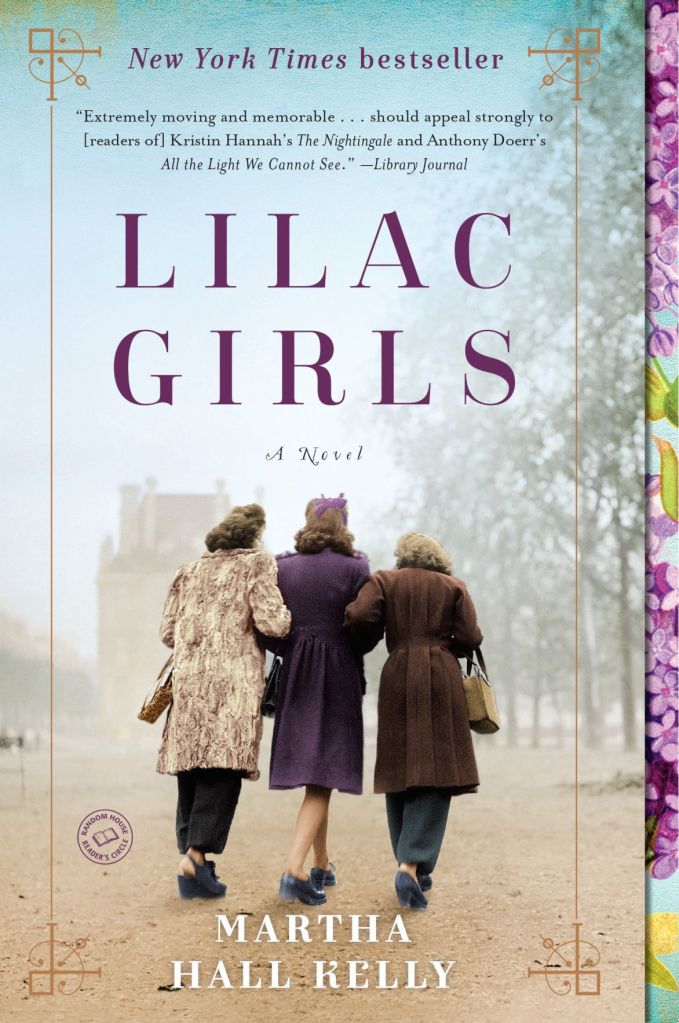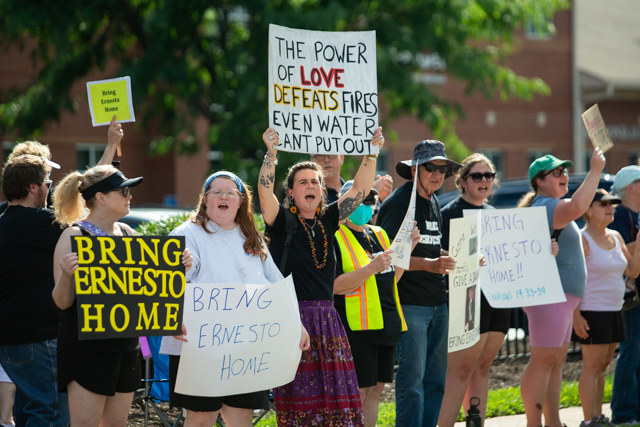Book review: ‘Lilac Girls’
Published 12:00 am Sunday, September 2, 2018

- BOOK REVIEW
“Lilac Girls” by Martha Hall Kelly. New York. Ballantine Books, 2017. 487 pages, $17 (paperback).
As someone who loves historical fiction, I have always been especially drawn to stories of World War II and the Holocaust because I strongly believe in learning all we can about the past, even if the stories themselves are difficult to read.
Martha Hall Kelly has done an amazing job of researching the stories from which she pulled the basis of her tale, and also of weaving together such unlikely women and circumstances. While one is perhaps used to reading the tales of those who were sent to concentration camps, this novel covers such a wider range of issues during World War II, including one of the female doctors who helped perform experiments on the prisoners of the concentration camp.
The story revolves around three women: Caroline Ferriday, a New York socialite; Kasia Kuzmerick, a Polish teenager who is arrested by Nazis; and Herta Oberheuser, a German doctor who signs up to work at a labor camp for women who have been arrested.
Each has her own story to tell about the Holocaust, and each is difficult to read for her own reasons. Caroline works at the French consulate, trying to help refugees and looking for love. When Adolf Hitler invades Poland in September 1939 and looks toward France, everything changes. Kasia is a world away from Caroline, and yet they are both affected by the war and, in one night, Kasia’s world is turned upside down. Herta works and lives in Germany and wants to distinguish herself in the world of medicine and became a surgeon, and when she sees an ad in the paper for a doctor at a camp, she thinks it is her chance to leave her sad world. She was unprepared for the camp that she enters into, and the things she is asked to do as a doctor. When Kasia is sent to Ravensbrück, a concentration camp for women, their lives are set on a collision course, and their stories will traverse continents in order to keep their own history from being forgotten.
The amount of research that shows through this novel is extraordinary. Caroline and Herta are based on real women and their stories are based on truth. Kasia and her sister are loosely based on two sisters who survived Ravensbrück. This novel covers two decades, from 1939 to 1959, and does what few other novels do – it sets the scene for what we as readers know is coming, but in a way unique to each character’s story. As the novel progresses, we see history unfold through the eyes of three women, and finally, we see how their lives were forever changed afterward.
Herta’s pieces of the story were the most difficult to read, and yet the most intriguing. I have read many real-life encounters and historical fiction stories of those in concentration camps and, while this one was just as powerful, Herta’s was something new. Here, we are given the perspective of a woman doctor working in a concentration camp and performing absolutely horrific experiments on other women. As she participates in putting patients who are perfectly well to sleep because they are too old or young, or as she comes to grips with what she has agreed to do, we also hear Hitler’s rhetoric of it all being for the good of Germany repeated in her thoughts. It turned my stomach in some cases, and yet it was fascinating.
The reason it was so fascinating is because we often look at horrible events in history and wonder how they could have come to pass. Herta’s story embodies this – it is done person by person as they buy into what they are told, as they are too afraid to stand up to others, and as they see their choices dwindling away. Many of the people participating in these awful crimes and acts of discrimination do so to follow what they see, because they hope for something better and they are ordinary people at any given time. That is hard for us to stomach. I think it was incredibly brave and moving of Kelly to research and give voice to a person who did such evil things, seemingly with barely any regret in the matter at all.
It does take a long time for Herta and Kasia’s stories to intertwine, and even longer for the stories to intersect with Caroline’s. At times, switching between the narratives was frustrating because, as a reader, you wanted to know what happened each time to the person whom you connected with at that moment. Kelly often cuts away at a cliffhanger moment and switches to the next perspective. In the beginning, it was difficult to figure out how these three were ever going to relate to one another, and eventually it was in ways that were quite unexpected. The momentum of the story sometimes lagged, but it was very worth the wait.
Although I know that Caroline raised lavender at her home, I do think the name of “Lilac Girls” does not do the story justice, and neither does the cover. I felt that as the three main characters are never physically linked together, the cover does not really portray what the story is about. I may understand its intent, but I would wish for something better, more striking and truer to the tone of the whole narrative. As they say – never judge a book by its cover!
Last but not least, I could have done without the romance story that involves Caroline. I felt there were much more important things to cover within the novel, and it always seemed to be out of character or out of the overall mood whenever we encountered it. Even with this romance, however, the book is a shining story that involves such a horrible time in our past. It brings light to the stories we overlook, forget and have trouble dealing with. It even forces us to examine what it must have been like to be one of the people on the other side of history.
The author is now at work on the prequel to “Lilac Girls.” You can find more information about the incredible story behind “Lilac Girls” at her website www.marthahallkelly.com.
– Reviewed by Fallon Willoughby, School of Professional Studies, Western Kentucky University.






